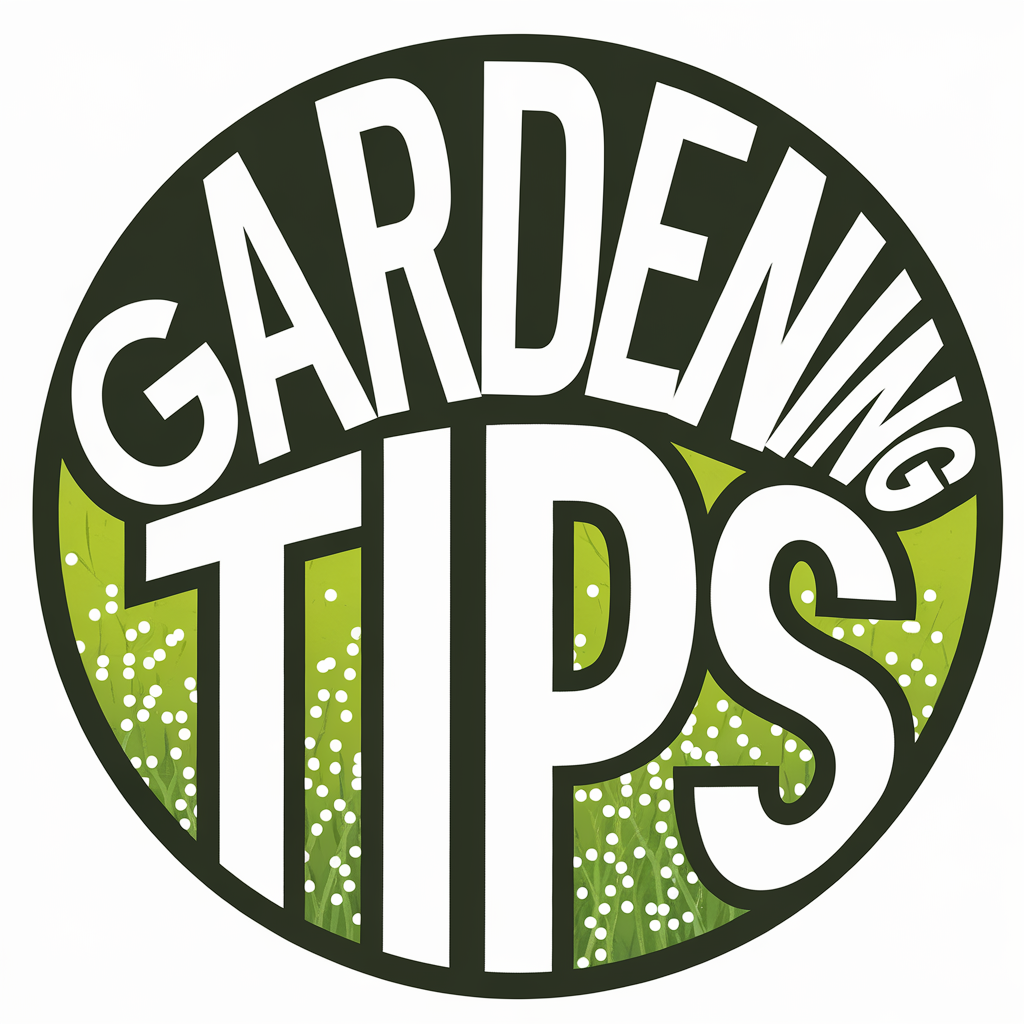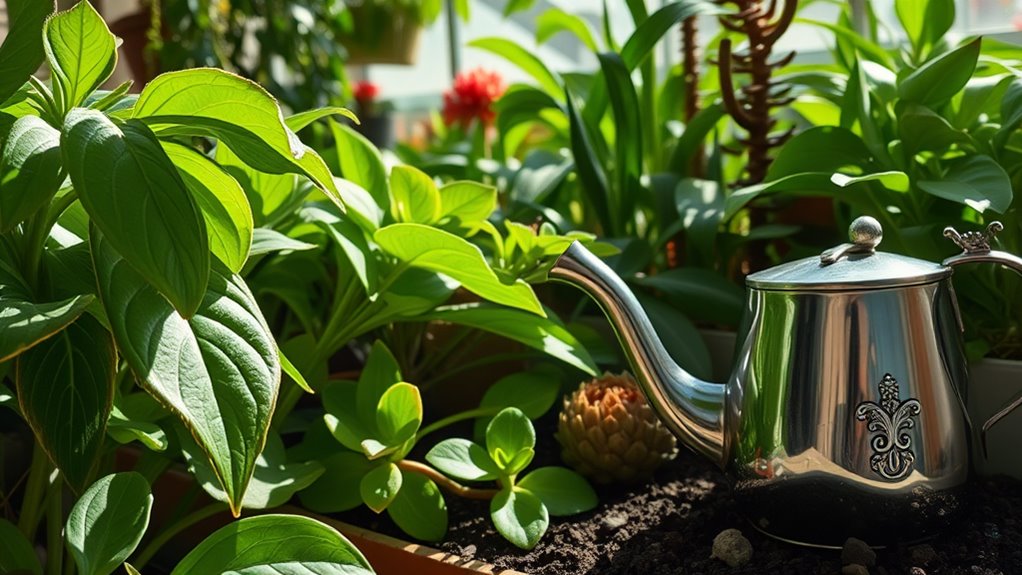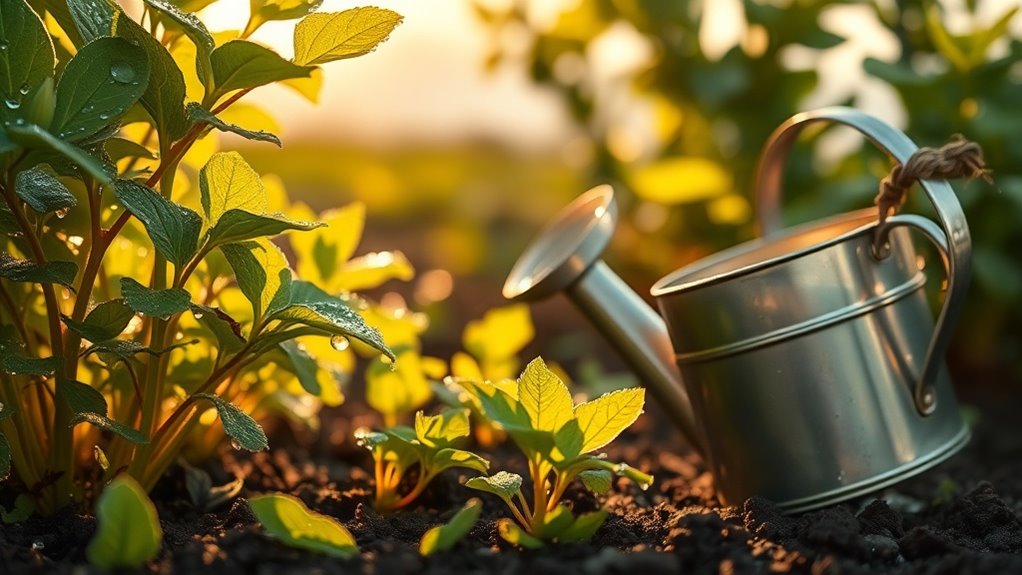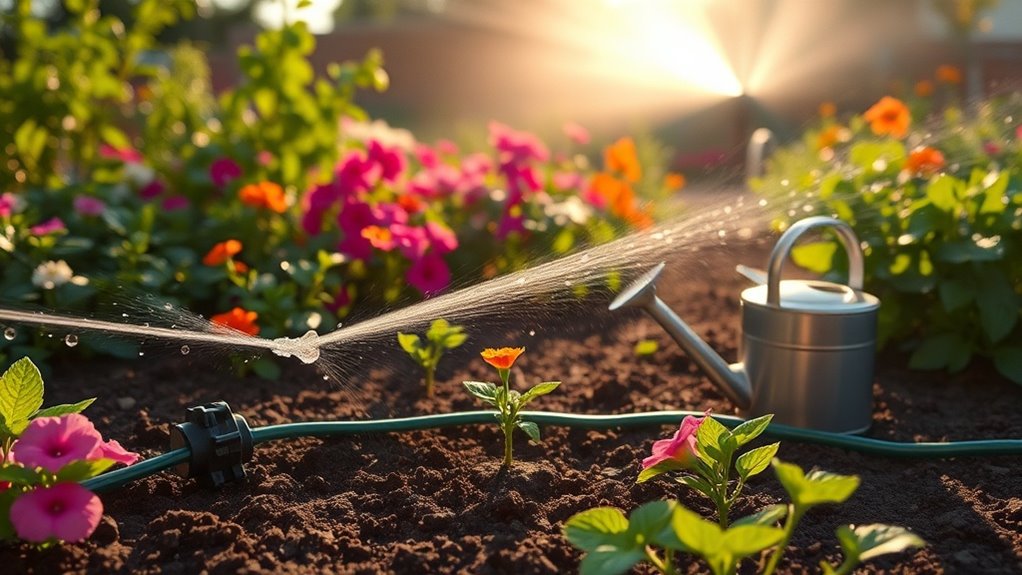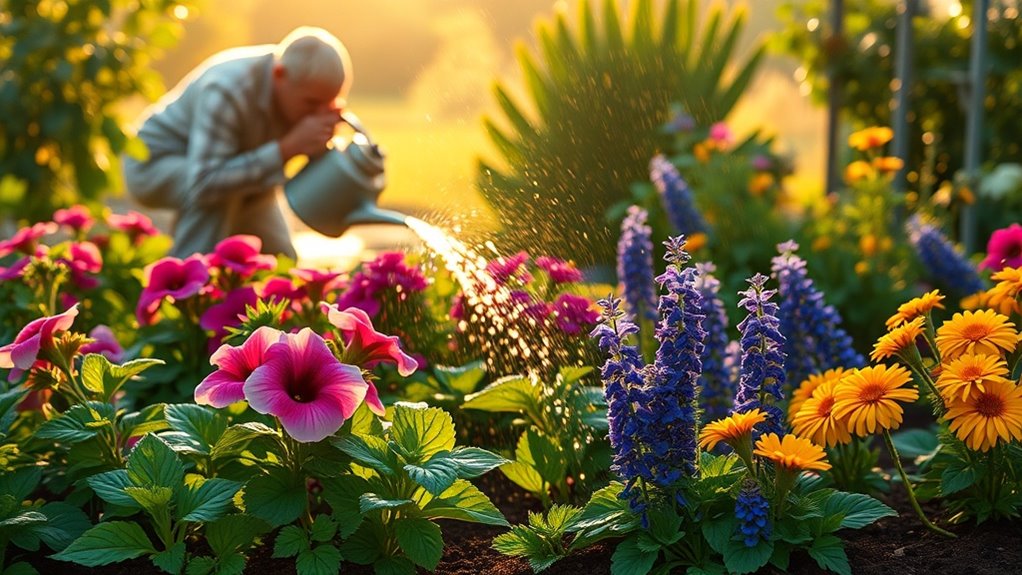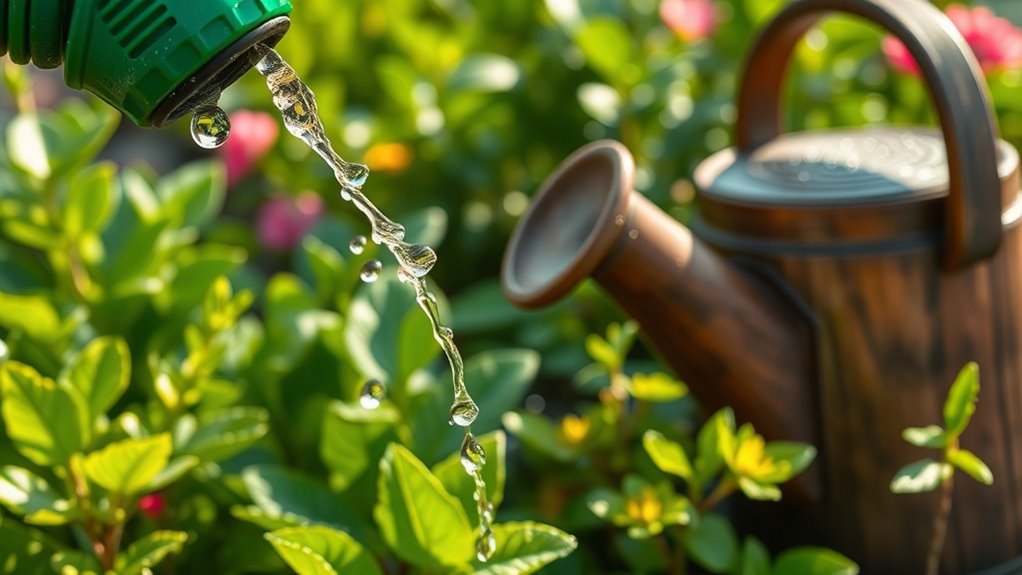Stop Killing Your Plants- 7 Watering Habits You Must Break!
Stop killing your plants by breaking these seven harmful watering habits! First, overwatering leads to root rot; always check soil moisture before watering. Make sure your pots have drainage holes and avoid using cold water to prevent shocking the roots. Water at the right times—mornings are best. Don’t stick to a fixed schedule; adjust for seasonal changes. Finally, regularly monitor your plants for signs of stress. Discover how to enhance your care routine even further!
Over-Watering Your Plants
Have you ever wondered why your plants seem to be struggling despite your diligent care?
One common mistake is over-watering.
To avoid this, follow key watering tips.
First, check the top inch of soil—if it’s dry, it’s time to water.
Use a moisture meter for accuracy.
Water deeply but less frequently, allowing roots to breathe.
Always choose pots with drainage holes to prevent waterlogging.
Adjust your watering schedule based on the season; plants need less water in winter. Additionally, being aware of the signs of overwatering can help you catch issues before they become severe.
Ignoring Drainage Needs
While avoiding over-watering is essential, it’s equally important to think about drainage needs for your plants. Poor drainage can lead to root rot and other issues, so make sure your pots have drainage holes.
If you’re using a container without drainage, consider adding rocks or gravel at the bottom to facilitate water flow. Additionally, use well-draining soil that allows excess moisture to escape.
Periodically check for any blockages in the drainage holes and clean them if necessary. By prioritizing good drainage, you’ll create a healthier environment for your plants, promoting growth and vitality. Moreover, proper drainage helps prevent overwatered plant recovery issues that can hinder your plant’s health. Don’t overlook this essential aspect of plant care!
Watering at the Wrong Time
When’s the best time to water your plants?
Early morning is ideal, as it allows the soil to absorb moisture before the heat of the day. Watering in the afternoon can lead to evaporation, wasting precious water. Evening watering may encourage mold growth, as damp foliage sits overnight. By sticking to morning sessions, you guarantee your plants have the hydration they need without risking disease or waste. Remember, consistency is key; establish a routine to help your plants thrive. Adjust your schedule based on the season and weather conditions to keep your plants healthy and happy year-round. Additionally, watering during the morning aligns with maximizing plant growth, ensuring that your garden flourishes with optimal hydration.
Using Cold Water
Using cold water for your plants can lead to temperature shock, which stresses their roots and hinders growth.
Ideally, you should aim for water that’s close to room temperature, as this helps maintain a stable environment for your plants. Additionally, using water at the right temperature can enhance plant hydration efficiency, allowing your plants to absorb moisture more effectively.
Temperature Shock Risks
How can cold water affect your plants?
Using cold water can shock your plants, leading to stress and stunted growth.
When you water with cold water, it disrupts the natural temperature balance of the soil, causing roots to contract and impair nutrient absorption.
This shock can weaken your plants’ defenses against pests and diseases.
Additionally, cold water can lead to wilting or yellowing leaves as your plants struggle to adjust.
To prevent temperature shock, always use water at room temperature or slightly warmer.
This simple adjustment can enhance your plants’ health and overall growth.
Keep your plants happy and thriving!
Optimal Water Temperature
Water temperature plays a crucial role in your plants’ health, particularly when it comes to watering practices.
Using cold water can shock your plants, leading to stress and stunted growth.
Instead, aim for lukewarm water, ideally around room temperature, which helps your plants absorb moisture more effectively.
Cold water can constrict roots and hinder nutrient uptake, causing yellowing leaves and wilting.
To avoid these issues, let tap water sit for a few hours before use, allowing it to warm up.
This simple adjustment can greatly improve your plants’ resilience and overall vitality, keeping them thriving and lush.
Relying Solely on Watering Schedules
While a consistent watering schedule can provide a framework for plant care, relying solely on it may lead to issues that compromise plant health. Plants respond to their environment, so you must adjust your watering based on factors like soil moisture, humidity, and light exposure. Here’s a quick reference to help you evaluate your watering needs:
| Factor | Signs of Underwatering | Signs of Overwatering |
|---|---|---|
| Soil Moisture | Dry, cracked soil | Soggy, waterlogged soil |
| Leaf Condition | Droopy, wilting leaves | Yellowing or browning |
| Growth Rate | Stunted growth | Root rot or fungal issues |
| Pot Size | Roots outgrowing the pot | Excessive drainage issues |
Additionally, adjusting your watering routine can lead to surprising benefits that enhance overall plant growth and vitality.
Not Adjusting for Seasonal Changes
Have you noticed how your plants behave differently throughout the year?
As seasons change, so do their water needs.
In spring and summer, when growth is robust, you’ll need to increase watering frequency.
Conversely, as temperatures drop in fall and winter, your plants enter a dormancy phase, requiring less water.
Ignoring these seasonal shifts can lead to overwatering or underwatering, both harmful to your plants.
Keep an eye on the weather and adjust accordingly.
A simple rule: water more during active growth and less when your plants are resting.
Understanding seasonal gardening secrets can help you better meet your plants’ needs.
Your plants will thrive with this mindful approach to their watering routine.
Neglecting Soil Moisture Levels
To keep your plants healthy, you need to check soil moisture levels regularly. Understanding each plant’s specific water needs will help you avoid over or under-watering. Additionally, decoding soil signs can provide valuable insights into your garden’s overall health and inform your watering practices.
Check Soil Moisture Regularly
Neglecting to check soil moisture levels can lead to a cascade of problems for your plants.
Regularly testing the soil’s moisture helps you avoid overwatering or underwatering, both of which can stress your plants.
Stick your finger about an inch into the soil; if it feels dry, it’s time to water. You can also use a moisture meter for more accuracy.
Remember, different plants have varying moisture needs, so adjust your checks accordingly.
Establish a routine, perhaps weekly, to guarantee your plants get the right amount of water.
This simple habit can greatly improve your plants’ health and longevity.
Understand Plant Water Needs
Understanding the specific water needs of your plants is essential for their health and growth.
Each plant type has unique requirements based on factors like species, size, and environment.
For instance, succulents thrive in dry conditions, while tropical plants prefer consistently moist soil.
Always check the moisture level before watering; don’t rely solely on a schedule.
Pay attention to signs like wilting or yellowing leaves, which indicate stress.
Adjust your watering habits accordingly, ensuring you give each plant just what it needs.
